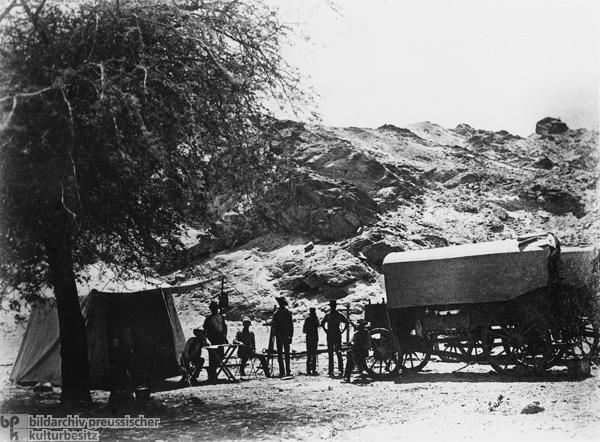













INTRODUCTION | DOCUMENTS | IMAGES | MAPS | EDITOR
|
German Southwest Africa (1884-1915) – today Namibia – was the most significant of Germany’s scattering of colonial possessions. By 1914, it boasted some 2,100 kilometers of rail track and an estimated 11,000 German settlers. All told, however, Germany’s colonial possessions sucked more out of the Reich treasury in the form of subsidies than they ever contributed – thus, Bismarck’s observation that colonies would cost more than they were worth proved correct in the end. In German Southwest Africa, rainfall was minimal and the land mostly barren. The territory did, however, prove rich in mineral deposits, particularly diamonds in the south and copper in the north, and this attracted a large number of fortune seekers. In the photograph below, adventurers in search of gold have set up camp in Urusis in the southern part of the territory.
© Bildarchiv Preußischer Kulturbesitz |
 print version
print version return to image list
return to image list previous image
previous image
